Forklift Tracking and Monitoring System
Forklift Tracking and Monitoring System
Real-time tracking of forklifts or other vehicles, such fork trucks, helps youmake better use of your fleet, cutting down on wasted man hours, achieving greater efficiency, profitability and safety and, most importantly, prevent accidents.
How does it work?
Each forklift, AVG or any other manipulation vehicle is equipped with a tag that transmits a signal to anchors attached to the ceilings. The signal is sent to the RTLS server and vehicle’s position in real-time and is calculated – with 30 cm accuracy. The tag can be powered in two ways: from the vehicle’s battery or by its own battery.
The benefits of forklift tracking:
Real-time and Historical Insights into Forklift Operation
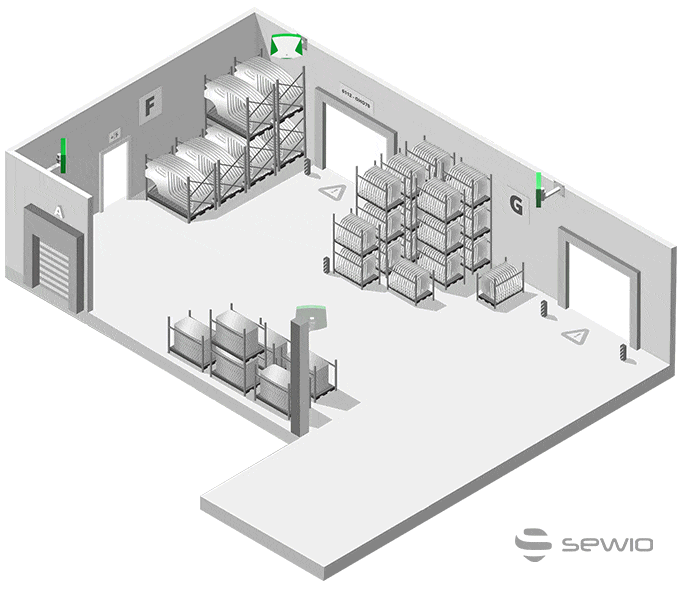
Full real-time visibility of the fleet is not only knowing the exact location of each forklift in real-time, but also having the ability to track their historical locations with pinpoint accuracy. This is exaclty what you get by tracking your forklifts.
The data is transformed into easy-to-read metrics such as:
- distance traveled by each forklift,
- run time versus stop time,
- the ratio of loaded and unloaded time,
- time needed to complete a task,
- the Overall Equipment Effectiveness (OEE).
With these insights, you can improve processes and the overall efficiency and utilization of your fleet using the forklift fleet management system.
Forklift Traffic Data
Advanced visualization can bring not only the routes of each forklift, but also additional insights and an understanding of processes to streamline the traffic and remove bottlenecks. These include heatmaps – showing how the density of the traffic is distributed within the facility and spaghetti diagrams – visualizing the continuous flow of traffic throughout the halls.
These clear and simple visualization methods help to onboard and convince decision makers to increase the efficiency and cut costs projects.
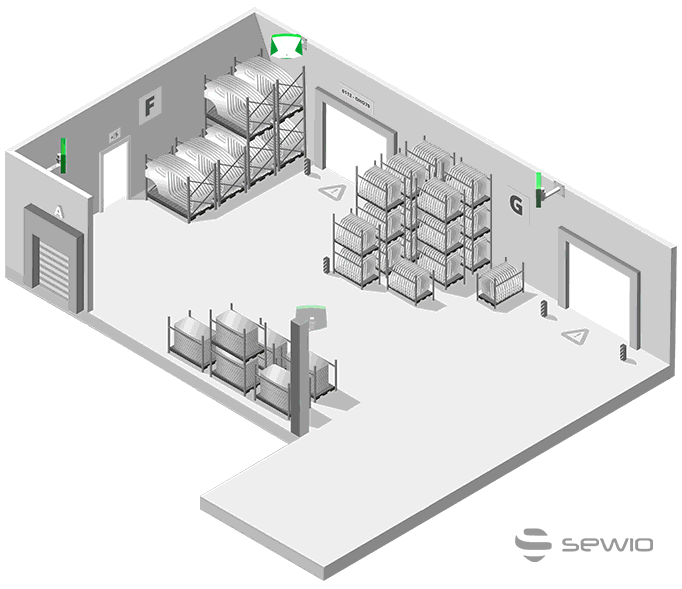
Forklift Navigation and Prevention of Incorrect Unloads
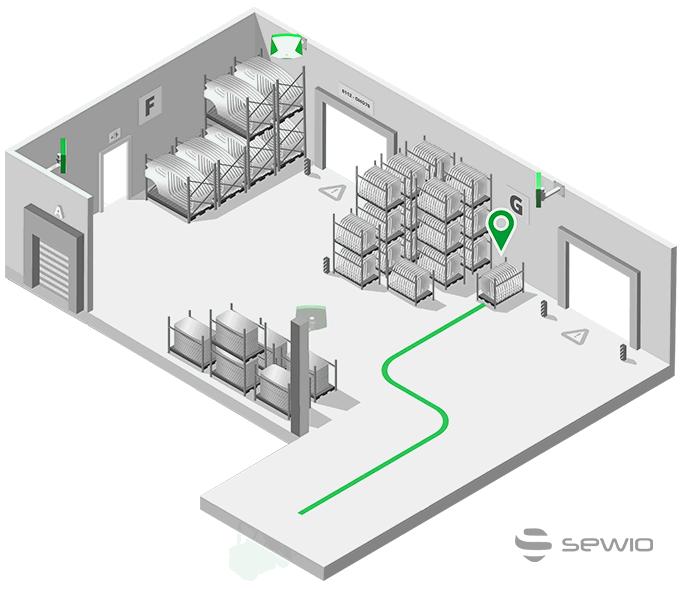
Operators have a real-time view of their allocated tasks, as forklift are equipped with screens . Thanks to this, perators immediately know where to pick up the next load and the exact location of where to unload it. In addition, the navigation guides the operator via the fastest/shortest route based on the traffic and blockers on the route.
Once the operator is ready to drop off the load, they are immediately alerted if they are at an incorrect position. UWB-powered Sewio RTLS prevents an incorrect unload and ensures 30 cm accuracy, even in harsh industrial environments, when you need to know the exact position of each pallet.
Forklift Route Optimization and Warehouse Utilization
The most optimum route reduces fuel costs, saves the time of drivers and reducesthe number of lift trucks needed, Thanks to complete and exact data at hand, the optimum and the most effective routes can be found for the drivers.
Through looking for inactive vehicles, better planning of the utilization of the warehouse by knowing each item’s exact location and seeing who is doing which task in real-time – all of these help to achieve higher utilization and a reduction in costs.
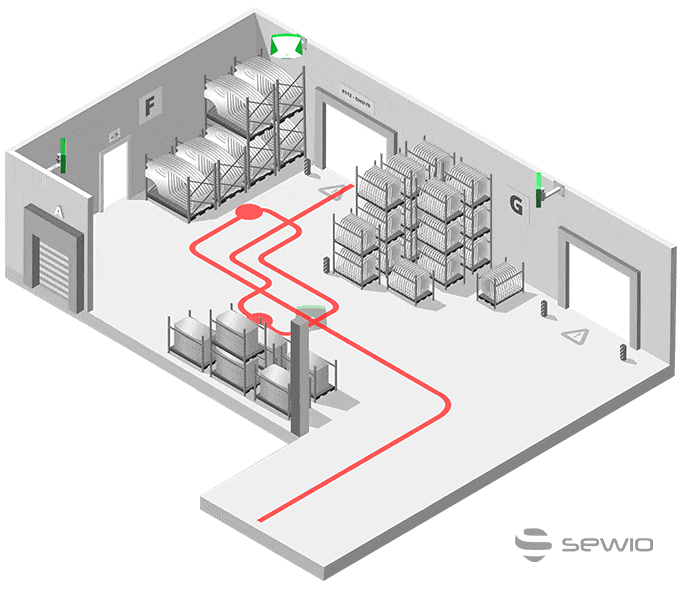
Tracking Material Flow using Forklift Tracking while Reducing Injuries
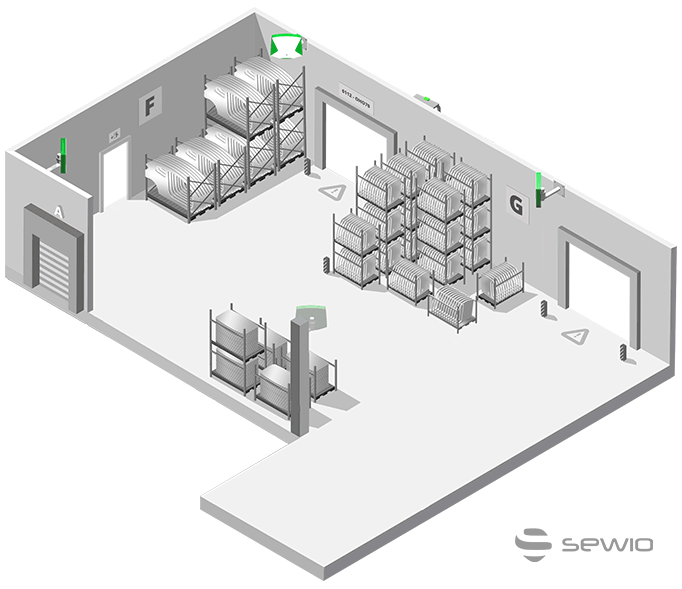
Forklift tracking for tracking assets and material flow brings savings. Instead of putting a tag on each pallet with the material, it’s cheaper and easier to track only the forklifts manipulating the goods and by that tracking the pallets too.
Anytime the forklift loads the material, the pallet is identified using either cameras and barcodes or NFC technology.
At the same moment, the real-time position is known, which creates full visibility of the material’s location and its flow without tracking the pallet itself, thus reducing the cost.
What is more, as the forklift driver doesn’t have to leave the driver’s cab for collecting Kanban cards, work orders or scanning the pallet, the risk of accidents is significantly reduced.
